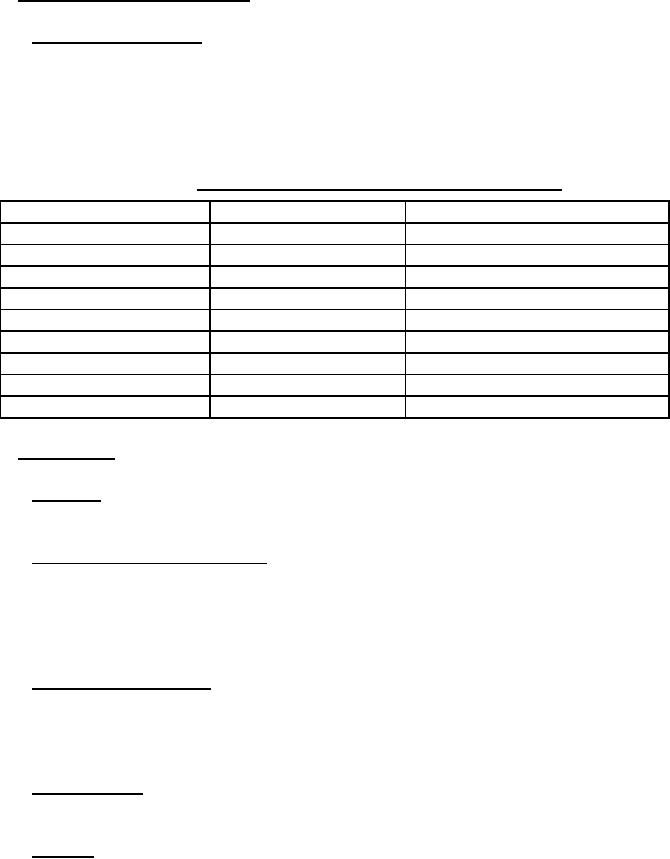
BB-H-886E
4.2 Quality conformance inspection.
4.2.1 Tests and examinations. Perform the content and capacity tests, and examinations of
table II. Any defects in the content or capacity tests shall be cause for rejection of the lot. A lot
for testing the content and capacity shall be defined as the number of containers filled from the
same source during an uninterrupted filling sequence and offered for examination at one time.
Any defects found in the examinations of the containers shall be cause for the rejection of only
those defective containers.
TABLE II. Tests and examinations of preparation for delivery.
Test/Examinations
Defect
Inspection level
Content
Not as specified in 3.1
One sample per lot, as per 4.2.1
Container
Not as specified in 3.2
100%
Paint
Not as specified in 3.2.1
100%
Maintenance
Not as specified in 3.3
100%
Leakage
Not as specified in 3.4
100%
Capacity
Not as specified in 3.5
One sample per lot, as per 4.2.1
Workmanship
Not as specified in 3.6
100%
Marking on container
Not as specified in 5.1
100%
Packaging and packing
Not as specified in 5.2
100%
4.3 Test methods.
4.3.1 Sampling. Samples for testing the content and capacity in table II shall be from filled
containers and shall be one sample unit per lot.
4.3.2 Hydrogen content determination. Hydrogen content shall be determined in accordance
with the analytical procedures specified by CGA G-5.3. The minimum hydrogen content shall
be 99.95 percent for grade A, 99.99 percent for grade B, and 99.999 percent for grade C.
Otherwise, compliance with the minimum requirements has not been met and shall constitute
failure of this test.
4.3.3 Impurities determination. The sample shall be analyzed for the impurities listed as
limiting characteristics in CGA G-5.3 using the analytical procedures specified therein. Unless
otherwise specified in the contract or purchase order (see 6.2), these impurities shall not exceed
the maximum quantity specified for the appropriate QVL.
4.3.4 Documentation. Records of the analysis and the qualifying concentrations used must be
kept on file for two years, and available upon the government's request.
4.3.5 Leakage. Each cylinder, after filling, shall be tested for leakage by applying a soap
solution to all portions of the valve, the junction of the valve and cylinder, and the safety device
on the cylinder. Care shall be taken to ensure that the solution used does not contaminate the
valve outlet. Any evidence of gas leakage, as evidenced by bubbling of the soap solution, shall
constitute failure of this test. Failure of this test shall be cause for rejection of the cylinder.
5
For Parts Inquires call Parts Hangar, Inc (727) 493-0744
© Copyright 2015 Integrated Publishing, Inc.
A Service Disabled Veteran Owned Small Business